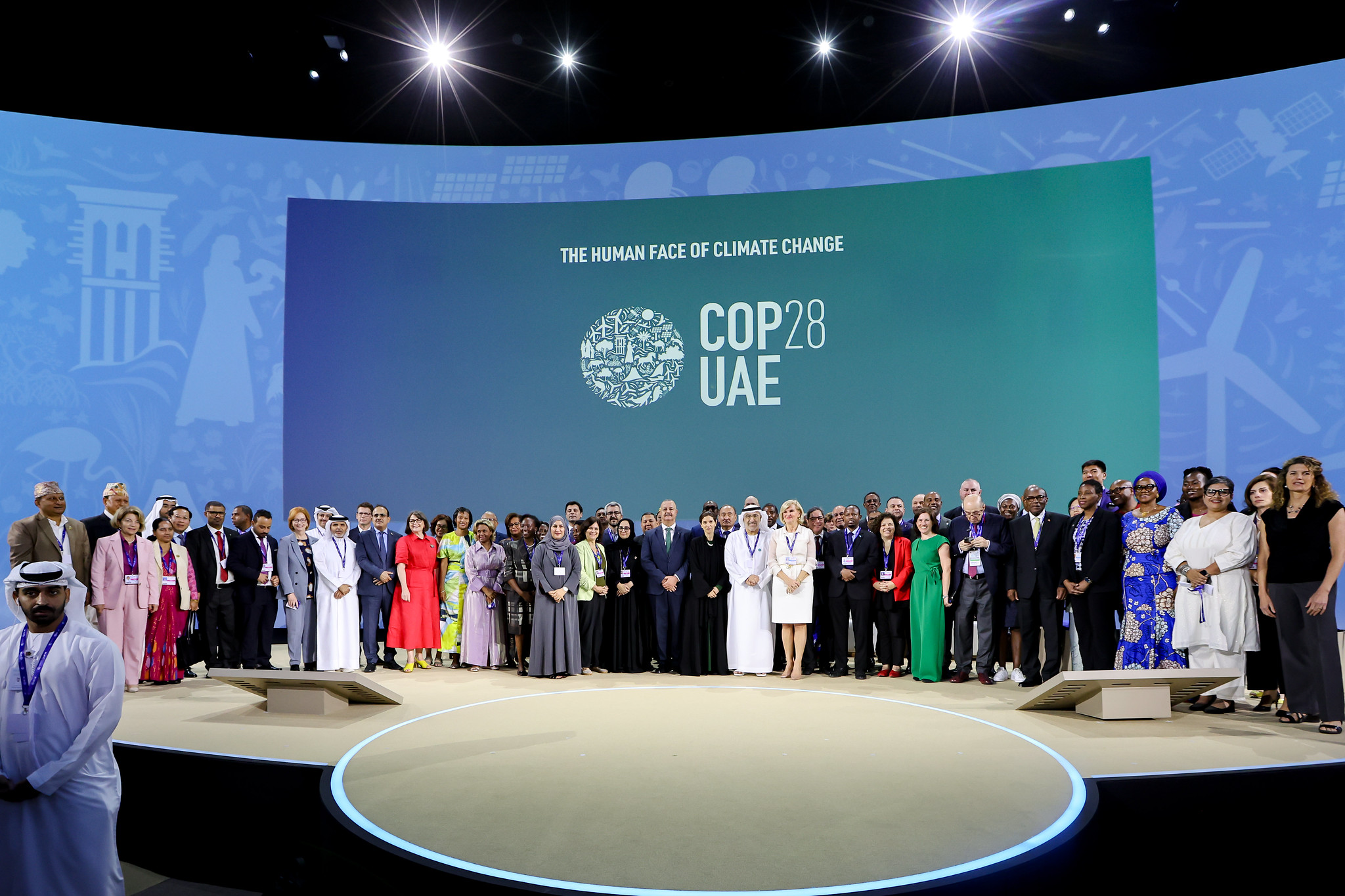Our Head of Research and Senior Peacebuilding Advisor Daniel Hyslop attended COP28 in Dubai as the Conference of the Parties, for the first time in its history, featured peace as a dedicated theme on 3 December. Daniel shares his views from the conference, focusing on this crucial link between peace and climate.
While at the time of writing the final outcomes from COP28 for action on climate change are still unclear, the 'Climate, Relief, Recovery, and Peace Declaration' does mark a historic and positive leap in recognising the critical connection between peace and climate. The international community's clear acknowledgment of climate change as a driver of conflict is welcome, but it is long overdue.
Conflict-affected areas bear the brunt of climate risks, with 17 of the top 25 countries most exposed to climate change also experiencing conflict. The peacebuilding community has long understood how climate change fuels resource conflicts, adversely affecting lives, livelihoods, and essential systems like water, food, and health. Changing these systems through climate adaptation or mitigation is inherently political and can often catalyse wider social, economic, and political tensions.
Moreover, climate change disproportionately affects vulnerable populations, including women, girls, youth, indigenous peoples, and the displaced. This also exacerbates existing tensions and grievances, leading to conflicts that can strain the delicate balance of social cohesion in a community or country. Conflict further undermines the cooperative environment that action on climate requires.
Thus, peace and peacebuilding should be seen as integral components of a comprehensive strategy for addressing the climate crisis. The success of climate responses depends not only on engineering challenges but fundamentally on people, politics, and communities – in essence, peace.
Success requires focus on both ‘hardware’ and ‘software’
Yet, there has been a tendency in internationally-driven development approaches to prioritise tangible aid (the ‘hardware') over more intangible elements related to agency, trust, and community engagement (the ‘software'). Concerns have been rising in the peace community for some years that the international climate architecture may not be learning adequately from past experiences, with resources not flowing to where they are most needed, and often in ways that are top-down as well as not inclusive of local communities and conditions.
This has been borne out in analysis of flows of climate finance, with fragile states receiving significantly less per person than non-fragile Least Developed Countries (USD 2.1 per person versus USD 18.1 per person). Further, an analysis by the CGIAR showed that the world’s largest vertical climate fund, the Green Climate Fund (GCF), does not fully incorporate conflict sensitivity or peace responsiveness in its project cycle. Out of USD 11.4 billion of allocated funds a mere USD 90 million of projects included basic conflict assessment measures (less than 1% of the total). This issue is not exclusive to the GCF; research on multiple climate funds shows similar blind spots on conflict sensitivity primarily due to a lack of familiarity with peacebuilding approaches at the local level by such entities.
This is in spite of the fact that peace-enhancing mechanisms and peacebuilding can be key to ensuring the bankability and success of many mitigation and adaptation projects. Finance for Peace’s first feasibility study on a peace bond related to a mitigation solar energy project showed how peace approaches can be embedded into such projects.
We believe such Peace Finance approaches are highly relevant to climate finance and wider climate adaptation and mitigation approaches. This is especially the case for financing adaptation which has been widely recognised as insufficient and underfunded. It is also critical to build a more viable pipeline for adaptation approaches – and this requires much more participatory engagement with communities, and is an approach that Finance for Peace is seeking to embed into wider development finance approaches.
Learning from the past in climate action
Local solutions and capacities are crucial and often overlooked. Climate action by the public and private sector should be informed by past experience in international development by actively engaging and leveraging the ingenuity and agency of indigenous and local communities, particularly at the early stages of designing projects.
Peace and peacebuilding approaches should not be seen as optional but as critical software embedded into climate responses. Sustainable solutions can only arise from a foundation of peace, where communities collaborate rather than compete for dwindling resources.
Finance for Peace looks forward to engaging with more vertical climate finance funds and climate finance partners to see how partnerships between climate and peace actors can create more holistic and successful climate and peace responses.

